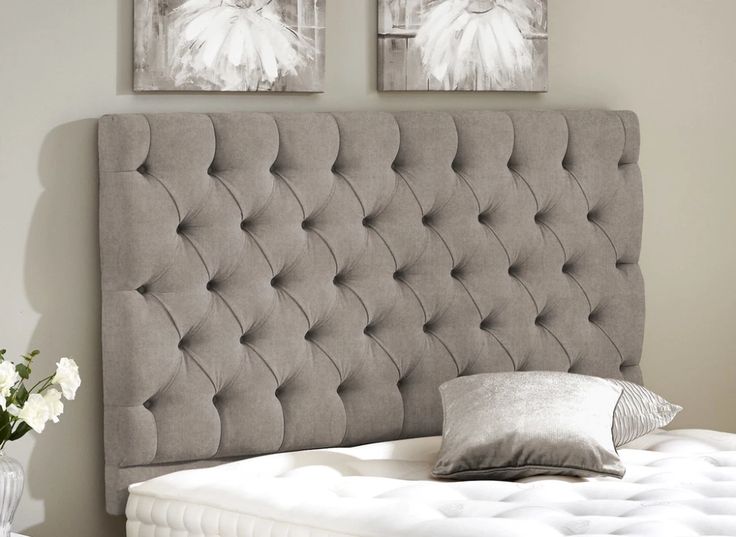An upholstered headboard can instantly add warmth and style to your bedroom, but it also attracts dust, stains, and odors over time. Knowing how to clean an upholstered headboard properly helps you keep your room fresh and your furniture looking new. This guide walks you through easy and safe cleaning methods for fabric, velvet, and leather-upholstered headboards.
Why Cleaning Your Upholstered Headboard Matters
Many people forget that headboards collect dirt, sweat, and body oils just like bedsheets or pillows. Regular cleaning isn’t only about looks—it’s about hygiene too. A dirty headboard can become a breeding ground for bacteria and allergens.
Benefits of cleaning your upholstered headboard:
- Extends the lifespan of your furniture
- Keeps your bedroom smelling fresh
- Reduces allergens and dust mites
- Enhances the overall look of your space
Identify the Upholstery Material
Before learning how to clean an upholstered headboard, it’s important to know what fabric it’s made of. Cleaning methods differ depending on the material.
Common Types of Upholstery:
- Linen or Cotton: Needs gentle cleaning with mild soap and water.
- Velvet: Requires delicate handling and a soft brush.
- Leather or Faux Leather: Wipe with a damp cloth and use a leather cleaner.
- Suede: Use a suede brush and avoid soaking it with water.
Always check the manufacturer’s label for cleaning instructions before applying any solution.
Gather Your Cleaning Supplies
Having the right supplies makes the job easier and prevents fabric damage.
You’ll Need:
- Vacuum cleaner with brush attachment
- Mild detergent or upholstery cleaner
- Soft cloth or sponge
- White vinegar or baking soda (for odors)
- A small bowl of warm water
- A soft-bristled brush
- Dry towel
Make sure you test any cleaner on a small hidden area first to ensure it doesn’t fade or stain the fabric.
Step 1: Vacuum the Headboard
Start by removing surface dust and debris. Use the vacuum’s upholstery attachment to gently go over the entire headboard. Pay close attention to seams, corners, and tufted areas where dust collects the most.
Vacuuming regularly helps maintain a clean appearance and prevents dirt from settling deeper into the fabric fibers.
Step 2: Spot Clean Any Stains
If you see spots or marks, it’s time to treat them before deep cleaning.
How to clean upholstered headboard stains:
- Mix one teaspoon of mild detergent with a cup of warm water.
- Dip a clean cloth in the solution and gently blot the stain.
- Avoid rubbing—it can spread the stain or damage fibers.
- Use a second damp cloth to remove any soap residue.
- Pat the area dry with a towel.
For tougher stains, try mixing equal parts white vinegar and water, but always test it first.
Step 3: Deodorize the Upholstery
Over time, upholstered headboards can absorb odors from sweat, perfumes, or room humidity.
To deodorize:
- Sprinkle baking soda over the surface.
- Let it sit for 30–45 minutes.
- Vacuum it thoroughly to remove any powder.
Baking soda is natural, safe, and excellent for neutralizing bad smells.
Step 4: Deep Clean the Fabric
Once you’ve spot cleaned and deodorized, you can deep clean the fabric for a fresh, restored look.
Steps to deep clean an upholstered headboard:
- Mix warm water with a few drops of mild detergent.
- Dip a soft sponge or microfiber cloth into the solution.
- Wring it out so it’s damp, not soaking wet.
- Gently wipe down the headboard in circular motions.
- Use a dry towel to absorb excess moisture.
Let it air dry completely before using the bed again. Avoid using a hairdryer or heater—too much heat can shrink or discolor fabric.
Step 5: Clean Different Upholstery Types Carefully
Different materials need different care techniques when learning how to clean upholstered headboard surfaces.
Velvet Upholstery
- Use a soft brush to lift the nap and remove dust.
- Blot stains gently with a damp cloth—never rub.
- Allow it to air dry and then brush again to restore texture.
Leather Upholstery
- Wipe with a damp cloth and mild soap.
- Apply leather conditioner to keep it soft and shiny.
- Avoid strong chemicals—they can crack the surface.
Suede Upholstery
- Use a suede brush to lift dirt.
- If it’s stained, apply a small amount of white vinegar on a soft cloth and blot lightly.
- Let it air dry completely.
Step 6: Maintain Regular Cleaning Routine
To avoid buildup and stains, follow a simple cleaning schedule.
Maintenance Tips:
- Vacuum weekly to remove dust.
- Wipe monthly with a damp cloth.
- Spot clean immediately after spills.
- Use a fabric protector spray to reduce staining.
A little effort regularly keeps your headboard in excellent condition all year round.
Extra Tips for a Fresh-Looking Headboard
Here are a few extra tricks that help keep your upholstered headboard looking and smelling great:
- Keep your bedroom well-ventilated to avoid musty odors.
- Avoid eating or drinking in bed.
- Use an air purifier if you suffer from allergies.
- Cover the headboard with a washable slipcover if possible.
These simple habits will extend the lifespan of your upholstery and maintain its fresh look.
When to Call a Professional
If your headboard has deep-set stains or delicate materials like silk or velvet, it’s safer to hire a professional upholstery cleaner. They use special tools and gentle cleaning agents that won’t damage the fabric.
Professional cleaning once a year can make a big difference in maintaining the headboard’s color, texture, and quality.
Conclusion
Knowing how to clean an upholstered headboard isn’t complicated—it just requires the right approach and a bit of consistency. Regular vacuuming, spot cleaning, and deodorizing go a long way in keeping your bedroom clean and healthy. Whether your headboard is made of linen, velvet, or leather, gentle cleaning methods will help it look as good as new for years.



